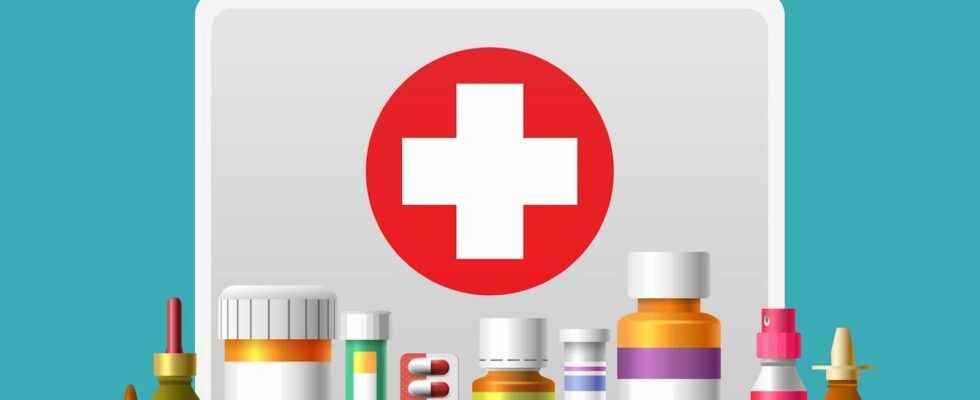Applying a good antiseptic is the first reflex to adopt in the event of a cut or lesion. Between alcohol, hydrogen peroxide, hexamidine and the others, which is the most effective and in which case should it be used?
You will also be interested
[EN VIDÉO] Psoriasis: how to treat it? Suffering from psoriasis, this disabling disease that is not easy to live with, Julie explains her experience to us with humor and in the company of the doctors she has consulted. It takes patience and perseverance, she says. But she has some and she knows how to communicate them to people with the same pathology.
First of all, it is necessary to differentiate antiseptic and disinfectant. An antiseptic is a treatment applied to injured skin to locally eliminate bio-organisms. A disinfectant is applied to healthy skin or an object preventively to prevent infection. Both products have the effect of inhibiting growth or killing microorganisms (virus, bacteria Where mushrooms). There are many families more or less adapted to each use.
The best antiseptics for the skin
- L’alcohol ethylic: in a bottle or in a compress, alcohol is very effective against viruses and bacteria: it kills nine germs out of ten in thirty seconds. Contrary to popular belief, 70° alcohol is preferable to 90° alcohol. The latter causes blood to clot, which creates a film under which germs and bacteria will be able to develop. However, alcohol has several disadvantages: it stings, dries out the skin and is flammable. It is rather to be used in prevention as a disinfectant.
- Chlorhexidine: well tolerated, it is active against bacteria and fungi. It is a good antiseptic for a superficial wound or scratch. It is also used in mouthwash. On the other hand, it is neurological: you should never use it to clean your ears, because it could reach the brain in case of perforation of the eardrum. Chlorhexidine is often combined with alcohol (example: Biseptine) or ammoniums quaternary (example: Mercryl).
- Eosin: this dye has almost zero antiseptic action and causes stains that are difficult to remove from clothing. It is mainly used for its drying effect, especially for diaper rash in infants.
- L’oxygenated water : peroxidehydrogen acts a little on anaerobic bacteria and certain viruses, but its action is very slow. It is best advised before using another antiseptic to stop the bleeding.
- Quaternary ammoniums: these surfactantslike detergents, kill or inhibit bacteria, but are totally ineffective on spores and viruses (eg Cetavlon or Sterlane).
- Hexamidine: this antiseptic is very well tolerated and is very effective against bacteria, especially staphylococci. On the other hand, it is weakly active on fungi (eg Hexomedine).
- Derivatives ofiodine : they are active on a large number of bacteria, viruses and fungi but should not be used on deep wounds because of the risk of iodine passing through the blood. Be careful also in case of allergy to iodine. These antiseptics are mainly prescribed before minor surgery or in a foaming solution as a disinfectant soap (eg Betadine).
- The derivatives of mercury : they prevent the multiplication of bacteria and certain fungi. But their effectiveness is limited and they can be allergenic. In short, they are not recommended (e.g.: Chromaplaie).
- Chlorine derivatives: in the form of hypochlorite of sodium, these antiseptics act on bacteria, fungi, and viruses. They are well tolerated but keep for a relatively short time after opening (eg Dakin, Amukine).
How to properly care for a wound
Before applying the antiseptic, the wound must be cleaned with soap and water, then carefully rinsed because some antiseptics such as chlorhexidine or quaternary ammoniums are inactivated by soap. You should never mix several antiseptics, because there are potentially toxic interaction phenomena, such as between iodine solutions and mercury derivatives. Finally, it is important to respect the duration use after opening indicated on the product, knowing that it may see its effectiveness decrease once started.
Interested in what you just read?
Subscribe to the newsletter Health question of the week : our answer to a question you ask yourself (more or less secretly). All our newsletters
